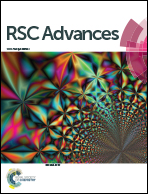64CuCl2 produced by direct neutron activation route as a cost-effective probe for cancer imaging: the journey has begun
Abstract
Copper-64 (t½ = 12.7 h, E.C. 45%, β− 37.1%, β+ 17.9%) is a promising radionuclide for positron emission tomography (PET) imaging and is generally produced by the 64Ni(p, n)64Cu nuclear reaction in a cyclotron. Despite the excellent attributes of 64Cu for PET imaging, the utility of this radioisotope is still limited to countries having good cyclotron facilities and excellent production logistics. We have explored the feasibility of using 64Cu in the form of 64CuCl2, produced in research reactors by an (n, γ) route, as a probe for tumor imaging by PET. The production strategy has been optimized to obtain 64CuCl2 with adequate specific activity and radionuclidic purity suitable for clinical use. Exploring copper metabolism as an imaging biomarker, 64CuCl2 can directly be used as an effective probe for non-invasive visualization of tumors. The stability of 64CuCl2 under physiological conditions was assessed by detailed in vitro studies in mouse serum medium. The biological efficacy of 64CuCl2 was studied in C57BL/6 mice bearing melanoma tumors and Swiss mice bearing fibrosarcoma tumors. The results of the biodistribution studies revealed significant tumor uptake (7.64 ± 1.71% ID per g in melanoma, 6.54 ± 1.41% ID per g in fibrosarcoma) within 4 h post-injection, with good tumor-to-background contrast. To the best of our knowledge, this is the first study which employs neutron activated 64CuCl2 as a potential radiotracer for PET imaging in preclinical settings. Owing to the availability of several medium-flux nuclear reactors with good geographical distribution in different parts of the world, the promising results obtained in this study would set the stage for wide-scale utilization of neutron activated 64CuCl2 as a cost-effective probe for PET imaging.



 Please wait while we load your content...
Please wait while we load your content...